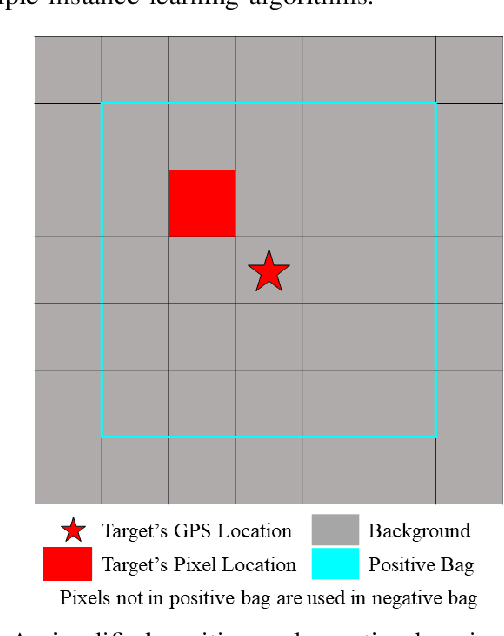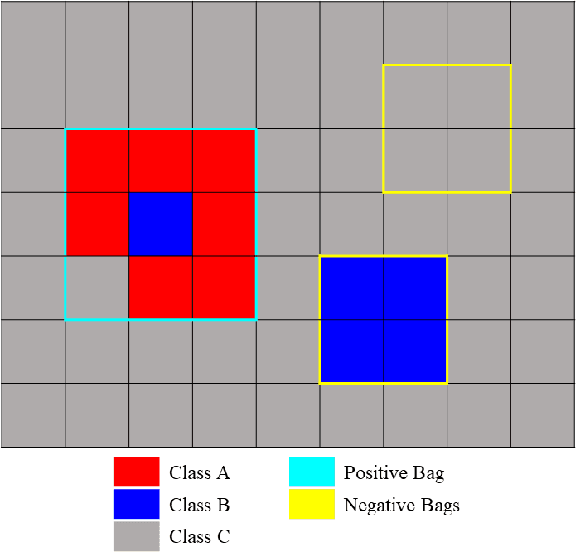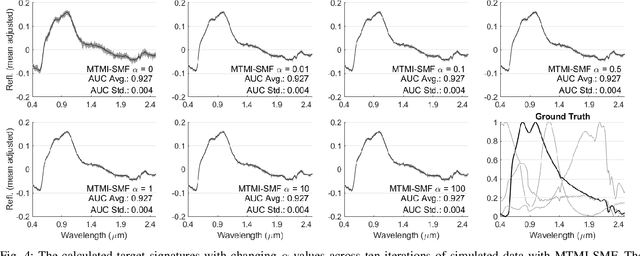James Bocinsky
Multi-Target Multiple Instance Learning for Hyperspectral Target Detection
Sep 07, 2019



Abstract:In remote sensing, it is often difficult to acquire or collect a large dataset that is accurately labeled. This difficulty is often due to several issues including but not limited to the study site's spatial area and accessibility, errors in global positioning system (GPS), and mixed pixels caused by an image's spatial resolution. An approach, with two variations, is proposed that estimates multiple target signatures from mixed training samples with imprecise labels: Multi-Target Multiple Instance Adaptive Cosine Estimator (Multi-Target MI-ACE) and Multi-Target Multiple Instance Spectral Match Filter (Multi-Target MI-SMF). The proposed methods address the problems above by directly considering the multiple-instance, imprecisely labeled dataset and learns a dictionary of target signatures that optimizes detection using the Adaptive Cosine Estimator (ACE) and Spectral Match Filter (SMF) against a background. The algorithms have two primary steps, initialization and optimization. The initialization process determines diverse target representatives, while the optimization process simultaneously updates the target representatives to maximize detection while learning the number of optimal signatures to describe the target class. Three designed experiments were done to test the proposed algorithms: a simulated hyperspectral dataset, the MUUFL Gulfport hyperspectral dataset collected over the University of Southern Mississippi-Gulfpark Campus, and the AVIRIS hyperspectral dataset collected over Santa Barbara County, California. Both simulated and real hyperspectral target detection experiments show the proposed algorithms are effective at learning target signatures and performing target detection.
Investigation of Initialization Strategies for the Multiple Instance Adaptive Cosine Estimator
Apr 30, 2019Abstract:Sensors which use electromagnetic induction (EMI) to excite a response in conducting bodies have long been investigated for subsurface explosive hazard detection. In particular, EMI sensors have been used to discriminate between different types of objects, and to detect objects with low metal content. One successful, previously investigated approach is the Multiple Instance Adaptive Cosine Estimator (MI-ACE). In this paper, a number of new initialization techniques for MI-ACE are proposed and evaluated using their respective performance and speed. The cross validated learned signatures, as well as learned background statistics, are used with Adaptive Cosine Estimator (ACE) to generate confidence maps, which are clustered into alarms. Alarms are scored against a ground truth and the initialization approaches are compared.
Comparison of Hand-held WEMI Target Detection Algorithms
Mar 22, 2019Abstract:Wide-band Electromagnetic Induction Sensors (WEMI) have been used for a number of years in subsurface detection of explosive hazards. While WEMI sensors have proven effective at localizing objects exhibiting large magnetic responses, detecting objects lacking or containing very low amounts of conductive materials can be challenging. In this paper, we compare a number of target detection algorithms in the literature in terms of detection performance. In the comparison, methods are tested on two real-world data sets: one containing relatively low amounts of ground noise pollution, and the other demonstrating highly-magnetic soil interference. Results are quantitatively evaluated through receiver-operator characteristic (ROC) curves and are used to highlight the strengths and weaknesses of the compared approaches in hand-held explosive hazard detection.
 Add to Chrome
Add to Chrome Add to Firefox
Add to Firefox Add to Edge
Add to Edge